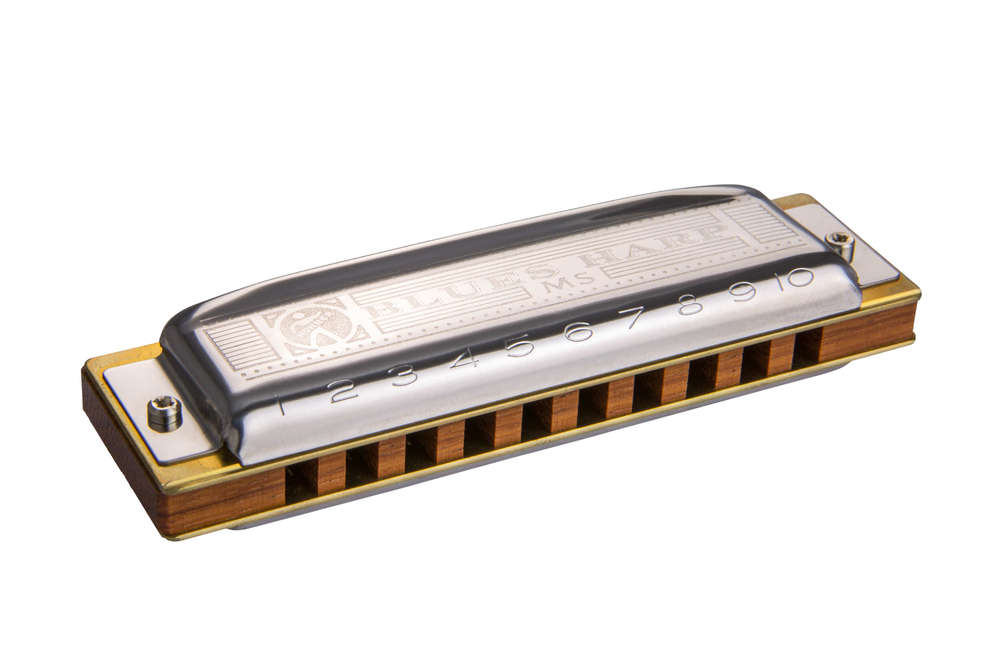Diatonic Harmonica Buying Guide – If you don’t know how to select a good diatonic harmonica to play, this article is Your guide to buying a Diatonic Harmonica.
The diatonic harmonica, or blues harmonica as it is often called, does not have easy access to all or any the possible notes like the chromatic harmonica, but lots of the notes that aren’t naturally found can be had by “bending” certain attract (inhale) and blow (exhale) notes. It’s the ‘bending audio’ of the diatonic harmonica which draws in most visitors to it.
Blues harp, mix harp, gob iron and blues harmonica are terms that differing people could use when discussing diatonic harmonicas. The titles may vary but the kind of harmonica is the same.
The key of the diatonic harmonica will be printed on its side/end, also on some diatonic harmonicas the next position is also printed on its side/end. Diatonic harmonicas can be purchased in all major, small secrets. eg. a C diatonic harmonica will only have the notes of the key of C, a G diatonic harmonica is only going to have the records of the main element of G etc.
Here we’ve given you some Q&A’s to help expand a*sist your diatonic harmonica buying decision.
Diatonic Harmonica Buying Guide

Diatonic harmonicas
The most frequent kind of harmonica you’ll encounter in pop, blues and folk music-diatonic harmonicas are made to play in a particular key. Having said that, overblowing and note-bending techniques plus taking part in alternative “positions” can help you play a diatonic in secrets and modes apart from its “standard” key. Several players, Howard Levy and Carlos Del Junco, are suffering from an overblowing technique with that they play chromatically utilizing a humble 10-gap diatonic harp.
Blues harp players usually perform in what’s called “mix harp” or “second position.” This calls for playing a harmonica that’s tuned to a perfect 4th below the main element the music’s written in. If a track is in the key of C, an F harmonica will be utilized. Most blues use the notes of the pentatonic size, and playing a G-tuned harp provides you usage of notes that match the pentatonic C range, especially on attract notes-those which you inhale to create those wailing “bent” records that are a cornerstone of blues harp technique.
There are a variety of other positions that skilled harp players use to mesh with other instruments and create various effects. Cupping the hands round the harp and making use of your tongue to stop and unblock openings are a few of the ways to produce rhythmic chordal results and shades. You’ll find numerous online language resources as well as harmonica books and tutorials that clarify these techniques at length. We’ll make several suggestions on excellent harp lessons below.
A diatonic harmonica’s simplicity helps it be a fantastic choice for the beginner. Most harmonica educators recommend getting started with a 10-hole diatonic harmonica tuned to the main element of C.
FAQs to buy diatonic harmonica
Q. I am not used to the diatonic or blues harmonica,which will i buy?
A: As both a Music Shop and very long time players we’ve been through this decision ourselves.The most popular harmonica for an entire beginner is a 10 hole harmonica in the main element of C. Most starter tuition books are along with a CD for the reason that same key (C) with music and instruction that you should play along to.
Q. I want to play the blues and bend notes. What should I buy?
A: We’ve too much to chose from. You may hear notes being ‘bent’ when you pay attention in particular tell a blues player.
You may get that very expressive bluesy sound on all diatonic harmonicas. It’s a method that may be put on even the standard basic level harmonica. A number of the better built harmonicas are simpler to flex than others because they are more airtight therefore more responsive so take less work to play.
Q. Should I buy a solid wood combed harmonica or a guy made comb?
A: The comb is the framework that the harmonica is made around. Typically it is constructed of solid wood but other materials are being utilized nowadays like plastic,steel and bamboo.The comb can make a notable difference to the sound, feel and weight of the harmonica.
Q. What are typically the most popular keys?
A: As a tough guide they are the most popular tips in this order….C A G D E F Bb Eb
Standard diatonic harmonicas go from the cheapest in pitch-G to the best in pitch-F#.
Q. What are ‘Low’ keys?
A: Low keyed harmonicas are usually keys that are less than G. Eg Low C or Low F. Lower records on the 10 opening diatonic are easier to play than higher ones. The reduced keyed harmonicas employ a warm and easy sound that suits some music flawlessly. They often aren’t played too much though as the reeds are much longer and move slower.
Q. Does it change lives the actual reeds are constructed of?
A: Reeds are what produce the notice/sound of a harmonica. Reeds are produced from brass, bronze or stainless. Brass is the most typical material to make reeds. Stainless steel reeds are available on higher prices devices. Brass is a smooth materials and produces a nice shade. Bronze reeds create a brighter build than brass reeds.Stainless reeds are more powerful than brass and bronze reeds and also have a longer life time, harmonicas fixed with these reeds also tend to be expensive because of the longer life. Reeds are ‘tuned’ during manufacture and in some instances can be re-tuned.
Q. MUST I buy a valved harmonica? What exactly are windsavers?
A: A good question. The bottom line is they can make harmonicas simpler to play. On harmonicas, ‘valves’ are flaps mounted on the reed dish at the rivet on the slot machine reverse the reed. They are created out of the thin plastic remove, or couple of strips. They stop the environment stream during an attract from getting into through the blow reeds (and vice versa for attract reeds) so less air is necessary overall to try out a reed thus they save blowing wind. Not all diatonic harmonicas can be found with valves.
Q. I wish to play traditional Irish or Scottish Dance music. What must i buy?
A: To try out reels, jigs etc. it can help if you come with an airtight, reactive, well-tuned harp. The very best available ‘off-the-shelf’ models have the plastic or metal comb (the little bit in the centre!). Models we recommend are: Seydel, Mix Harp, Meisterclass, Golden Melody, Suzuki Pro Grasp, Lee Oskar by Tombo and Hering Blues & Dark Blues.
Q. I want to play the harmonica whilst taking part in acoustic guitar/mandolin/ukulele etc. How do you do that?
A: You’ll need a throat brace. They sit down around your throat, are adjustable and clamp the harmonica and that means you can play them ‘hands free’ departing you to play your other device. There are many different styles from different manufacturers. Not absolutely all harmonicas will easily fit into all neck brackets. We stock models like the professional quality Hohner flexirack and the K&M deluxe throat braces that are amongst typically the most popular. Please call to check on for even more advice. Neck braces aren’t normally used for chromatic harmonicas but can be utilized on tremolo harmonicas.
Q. MAY I buy a fresh group of reed-plates?
A: Yes. We bring a variety of alternative reed-plates for some harmonicas. If you’re fairly ‘useful’ it is something that you can do. Remember you may influence any guarantee if you make any adjustments to a harmonica.
Q I’ve a beard. Will that have an effect on my selection of buying harmonicas?
A: It really is a valid question. Some harmonicas are believed beard friendly. Whiskers will often catch in the region between your cover plates and your body causing just a little pain!! The greater ergonomic and limited fitted the harmonica the smoother the exterior playing surface is.
Q. I wish to play via an amplifier, what do I want?
A: There are a few dedicated ‘electric’ harmonicas on the marketplace but it is more prevalent to try out into a microphone and hook up to an amplifier. Amazon Music Shop offers various solutions in amplification. The Micro Vox system is trusted for harmonica and also check out dedicated harmonica microphones like the Hohner Blues-Blaster.
Q. I play the diatonic and want to try the chromatic. Which do I go for?
A: We stock plenty of chromatic harmonicas for the novice to the professional. Typically the most popular choice is the 12 gap chromatic in C. On the other hand you can test a single tuned diatonic like the Seydel Orchestra. They are just like a mini chromatic harmonicas.
Whilst the techniques are extremely similar in playing most harmonicas the note layout is somewhat different. The Chromatic harmonicas has more range than the diatonic and it is bigger in proportions. Chromatics vary in cost quite a bit depending on quality. An excellent quality starter chromatic can range between £50 upwards.
Added by
Harmonica Tabs
WRITE A COMMENT
WRITE A COMMENT



 (5 votes, average: 3.40 out of 5)
(5 votes, average: 3.40 out of 5)



No comments yet